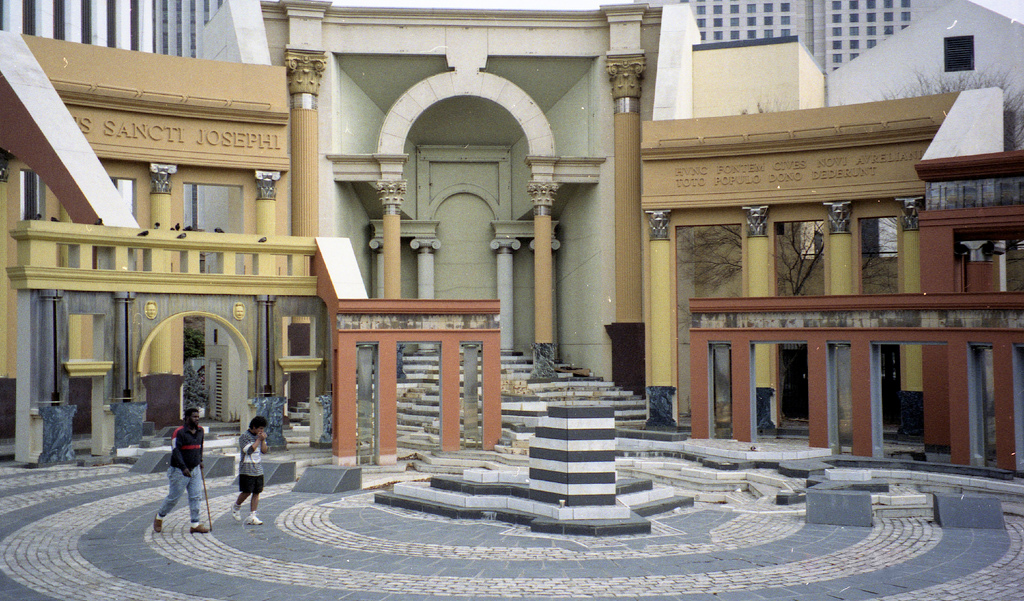Piazza d'Italia, designed by Charles Moore and completed in 1978, remains an architectural icon today primarily for these reasons:
1. Seminal Postmodern Landmark
It is considered one of the first and most influential built expressions of Postmodern architecture. Moore challenged the prevailing modernist doctrine of functionalism and minimalism, championing instead historical references, symbolism, ornamentation, humor, and complex spatial experiences.
2. Daring Reinterpretation of Classical Forms
The piazza features an exuberant, theatrical collage of classical Italian architectural elements radically reimagined:

- Orders Recontextualized: Colonnades utilizing the five classical orders (Tuscan, Doric, Ionic, Corinthian, Composite) are rendered in surprising, non-traditional materials like stainless steel, neon, stucco, and terrazzo.
- Playful Geometry: Circles, arcs, and fragmented forms create dynamic, non-axial spaces instead of rigid symmetry.
- Cultural Synthesis: Moore incorporated New Orleans-specific elements, like references to the Mississippi River ("Map Fountain").
3. Celebration of Place and Community
Commissioned by the local Italian-American community, the piazza explicitly aimed to honor their heritage within the specific context of New Orleans. It stands as a powerful statement on urban placemaking and cultural identity.
4. Controversy and Resilience
Its unconventional style sparked immediate debate. While celebrated by some, it faced periods of neglect, particularly after partial destruction by Hurricane Katrina. Subsequent restoration efforts underscored its recognized historical and cultural value, cementing its status as a resilient landmark.
5. Lasting Architectural Influence
Its bold embrace of historical quotation, irony, color, and populist appeal fundamentally influenced architectural discourse and practice. Architects globally looked to it as proof that architecture could be historically engaged, contextually sensitive, formally inventive, and emotionally resonant all at once.
In essence, Piazza d'Italia's enduring fame stems from its pivotal role as a groundbreaking manifesto of Postmodernism, its vibrant synthesis of history and contemporary culture, its celebration of specific identity, and its audacious, joyful design. It continues to be studied and visited as a key work in 20th-century architecture.






